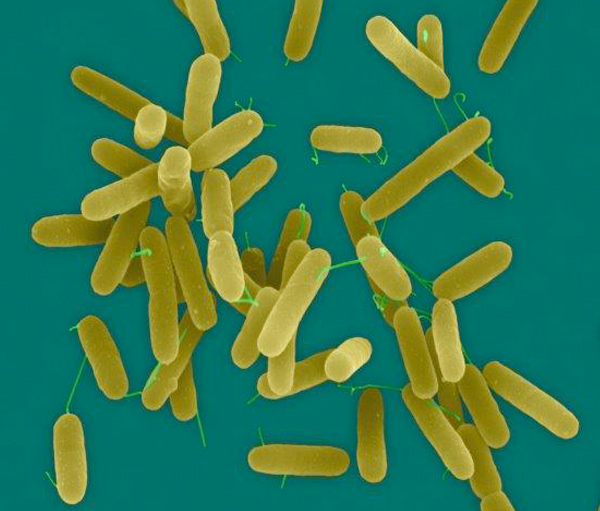
© Dennis Kunkel Microscopy
Home Resources Pathogens What is Pseudomonas aeruginosa?
What is Pseudomonas aeruginosa?

© Dennis Kunkel Microscopy
Pseudomonas aeruginosa is a Gram negative bacteria that is commonly found in the environment e.g. soil, water and other moist locations
What diseases are caused by Pseudomonas aeruginosa?
Pseudomonas aeruginosa is an opportunistic pathogen. The bacteria takes advantage of an individual's weakened immune system to create an infection and this organism also produces tissue-damaging toxins. Pseudomonas aeruginosa causes urinary tract infections, respiratory system infections, dermatitis, soft tissue infections, bacteremia, bone and joint infections, gastrointestinal infections and a variety of systemic infections, particularly in patients with severe burns and in cancer and AIDS patients who are immunosuppressed.
Who is more susceptible to infection from Pseudomonas aeruginosa?
This bacterium is of particular concern to individuals with cystic fibrosis who are highly susceptible to pseudomonal lung infections. Pseudomonas aeruginosa is also of grave concern to cancer and burn patients as well as those people who are immunocompromised. The case fatality rate for individuals infected with Pseudomonas aeruginosa approaches 50 percent.
Epidemiology of Pseudomonas aeruginosa
Pseudomonas aeruginosa is primarily a nosocomial pathogen. According to the CDC, the overall incidence of P. aeruginosa infections in US hospitals averages about 0.4 percent (4 per 1000 discharges), and the bacterium is the fourth most commonly-isolated nosocomial pathogen accounting for 10.1 percent of all hospital-acquired infections. Within the hospital, P. aeruginosa finds numerous reservoirs: disinfectants, respiratory equipment, food, sinks, taps, and mops. This organism is often reintroduced into the hospital environment on fruits, plants, vegetables, as well by visitors and patients transferred from other facilities. Spread occurs from patient to patient on the hands of hospital personnel, by direct patient contact with contaminated reservoirs, and by the ingestion of contaminated foods and water.
Incubation Period
Usually 24-72 hours.
Diagnosis of Pseudomonas aeruginosa
Diagnosis of P. aeruginosa infection depends upon isolation and laboratory identification of the bacterium. It grows well on most laboratory media and commonly is isolated on blood agar or eosin-methylthionine blue agar. It is identified on the basis of its Gram morphology, inability to ferment lactose, a positive oxidase reaction, its fruity odor, and its ability to grow at 42° C. Fluorescence under ultraviolet light is helpful in early identification of P. aeruginosa colonies and may also help identify its presence in wounds.
Treatment of Pseudomonas aeruginosa
Pseudomonas aeruginosa is frequently resistant to many commonly used antibiotics. Although many strains are susceptible to gentamicin, tobramycin, colistin, and amikacin, resistant forms have developed. The combination of gentamicin and carbenicillin is frequently used to treat severe Pseudomonas infections. Several types of vaccines are being tested, but none is currently available for general use.
* - Sometimes (mis) spelled Pseudomonas aeroginosa
Contact EHA Consulting Group today for more information about how we can assist your company.
We offer services for
- Retail Food Safety
- Restaurant Food Safety
- Manufacturers
- Food Trucks
- Drugs & Cosmetics
- Melons & Cantaloupes
- Produce
- Warehouses
- Food Packaging & Packaging Materials